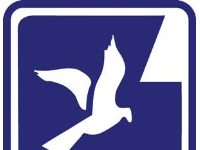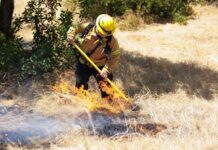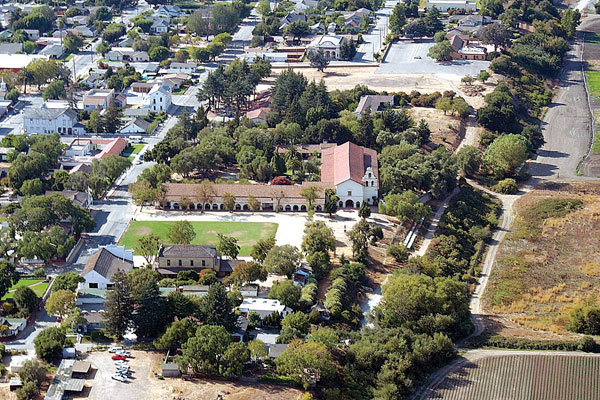Resources abound in San Benito County for addicts ready to get
sober
For John Valenzuela, May 13 marks an important anniversary. It
is the day nearly nine years ago this year when he admitted he had
a problem with drinking and finally sought help.
At the time, Valenzuela said he was faced with a catastrophe in
his life and was trying to hold his marriage together with
counseling.
Resources abound in San Benito County for addicts ready to get sober
For John Valenzuela, May 13 marks an important anniversary. It is the day nearly nine years ago this year when he admitted he had a problem with drinking and finally sought help.
At the time, Valenzuela said he was faced with a catastrophe in his life and was trying to hold his marriage together with counseling.
“The person who was the facilitator said anyone with a drug or drinking problem should not come to this meeting, but should come to another meeting (focused on recovery),” he said. “It was in San Jose and we lived in Hollister. On the way home, I kept asking my wife, ‘Do you think I have a drinking problem?'”
Denial of a problem
Valenzuela said he long had been in denial.
“It happens when we are confronted with our addiction,” he said.
He went into a chemical dependency program, which met three times a week, as well as family counseling to try to save his marriage. His wife still decided to leave him. When he looked for a program closer to home to continue his progress, he discovered the Celebrate Recovery meetings at Hillside Christian Fellowship on Santa Ana Road, just blocks from his house.
Dori and Bruce Bannister started the program that grew into Celebrate Recovery 10 years ago, though the couple has been involved with rehabilitation programs for 40 years. The couple was active in San Jose in a food distribution center and with counseling people on drug and alcohol addiction, and they wanted to continue that involvement when they relocated to Hollister.
“I saw a big need, which really started in the churches, of people coming in so broken and needing the tools to not get stuck,” she said. “So we started doing it.”
The Celebrate Recovery program serves up to 100 people, and Valenzuela is now the ministry leader for the program.
“It’s sort of a big part of our DNA,” Bannister said. “It’s what we thrive on. It is a passion, trying to help. As you know, more and more people need it.”
Celebrate Recovery is a Bible-based 12-step program, Bannister said. There is a scripture put to each step. Valenzeula and Bannister stress that the program is open to people struggling with all types of addiction, from alcohol and drugs, to sex addiction and codependency.
Valenzuela said his own experience with recovery helps him to help other people through the experience.
“They can tell that by just the way you communicate and speak,” that you have been through it,” Valenzuela said. “You can share your past experiences. Who can you help out of a deep hole if you haven’t been there? You can relate your experiences.”
Valenzuela related the experience of helping an addict to preparing soil for planting.
“You need to feed them a little at a time,” Valenzuela said. “Their hearts are like hard ground. If you run water on hard ground it will just run off. Little by little, every time they come in, we sprinkle a few little drops until it gets soft. You plant seeds and then things can start to grow.”
A big part of the ministry is having people share their testimonies of their own experience with addiction and how they have coped with recovery. Valenzuela often records the testimonials so that people can watch them again.
“Seeing those lives that have changed – sometimes people go back and we need to sit and pull them back,” he said. “We say, ‘When you did your testimony, you touched a lot of hearts.'”
Valenzuela is now remarried and lives in Morgan Hill, but he continues to come to Hollister every Wednesday night for the Celebrate Recovery fellowship and meeting. The group gathers at 6 p.m. for dinner, then meets from 7 p.m. to 9 p.m. for testimonials and the recovery group.
“It’s a labor of love for me,” Valenzuela said. “When my wife gave me the ultimatum she was going to leave, that’s when I turned to God, as my last resort. He should always be a first, but I made him the last.”
Open orientation is a first step
The County of San Benito Behavioral Health Department offers drug and alcohol treatment through its substance abuse program. The staff offers an open orientation Thursdays from 8:30 a.m. to 10:30 a.m. for anyone who wants to get more information about the programs offered and who wants an assessment for treatment.
In addition to the treatment program, the staff also works on prevention programs with local schools and was instrumental in promoting a social host ordinance (see related story, B1). The staff coordinates drug court with people from the court house and probation department to give drug offenders a chance to get clean and sober, rather than sending them to jail.
“It’s a new program for us so we are still learning,” Hankla said. “We’ve got a lot of support and we have a great drug court team that works together to provide the same support we can so they are successful and they become productive members of society again.”
The staff offers gender-specific groups, a monolingual Spanish group, a peri-natal program and a program for adolescents. They worked with 370 clients in the 2008-09 fiscal year.
“Depending on their referral, we have a sliding scale and it is very reasonable,” said Renee Hankla, the substance abuse program manager. “Some clients have their fees covered by the referral source.”
The county-run program is open to anyone, but it services people who are court-ordered to receive treatment.
“The hardest part is just admitting that they need help,” Hankla said. “It’s hard to say. A lot of our clients are mandated. People’s motivation is different depending on their situation.”
Hankla said those undergoing treatment are encouraged to attend self-help programs as well, such as Alcoholics Anonymous meetings or Narcotics Anonymous meetings.
“We have an after care program so they can come back whenever they need to,” Hankla said. “We can refer them out to sober living environments and residential programs when necessary.”
Hankla said there are some important factors than can influence one’s ability to stay sober.
“I think a combination of things help people stay sober,” Hankla said. “Secure housing, transportation, employment, a sponsor, support of their friends and their family.”
Resources:
Substance Abuse program
County of San Benito, Behavioral Health Department
http://www.sbcmh.org/saservices.htm
636-4020
Open orientation is Thursdays from 8:30 a.m. to 10:30 a.m., with various treatment and group meetings available. Referrals for sober living or other programs.
Celebrate Recovery
Hillside Christian Fellowship
281 San Felipe Road, Hollister, 630-0800
Meets Wednesdays from 7 p.m. to 9 p.m., with a dinner at 6 p.m.
Al-Anon support group
www.ncwsa.org/d23/index.html
Meets Wednesdays from 5:30 p.m. to 6:30 p.m. at Mars Hill Coffeehouse, 610 San Benito St., for family and friends of alcoholics.
Salinas Valley Area intergroup of Alcoholics Anonymous (includes San Benito County)
www.aasalinas.org
424-9874
Monterey County Area Narcotics Anonymous(includes San Benito County)
www.monterey-sbna.org/
624-2055 or 758-1630







